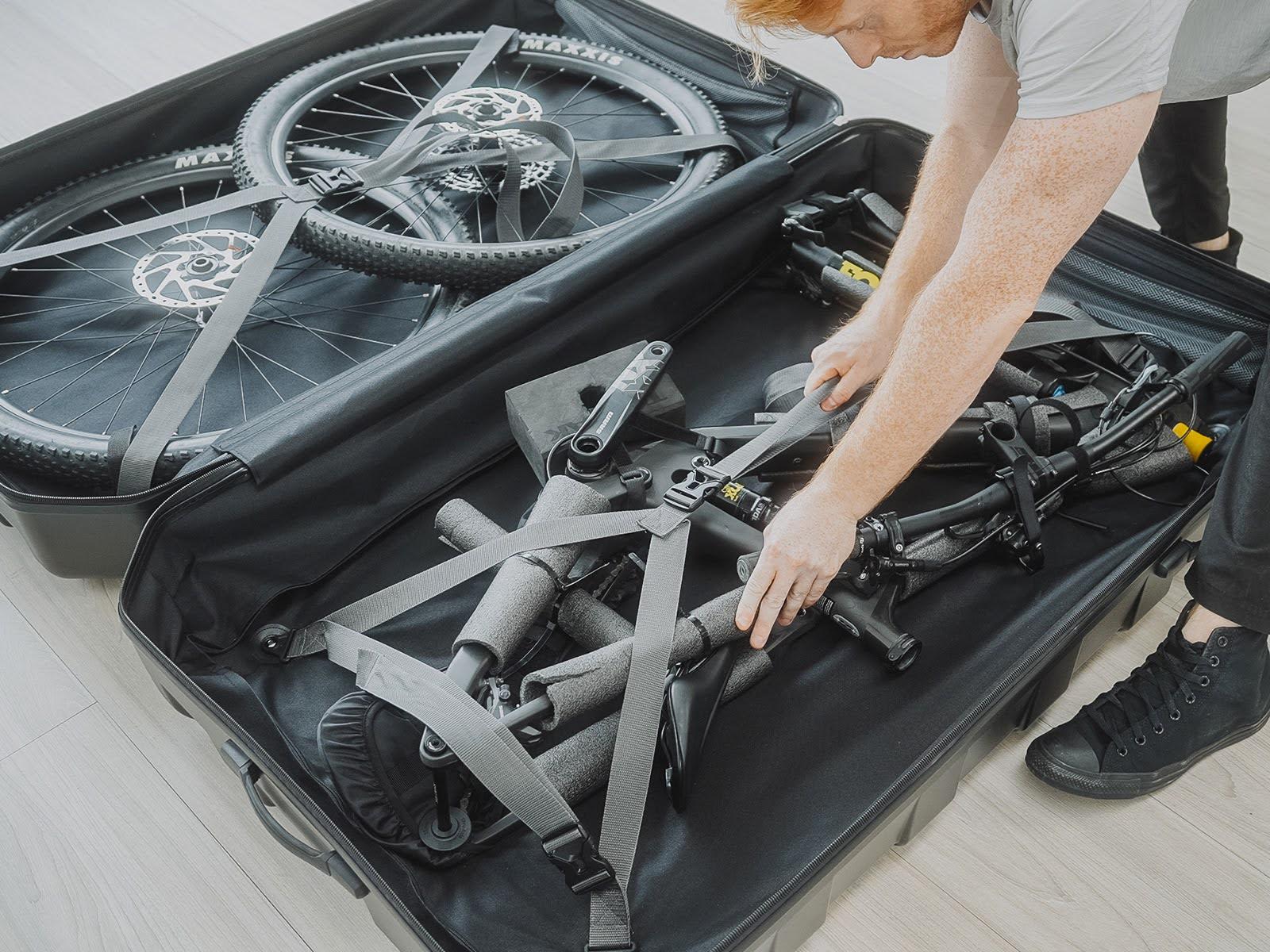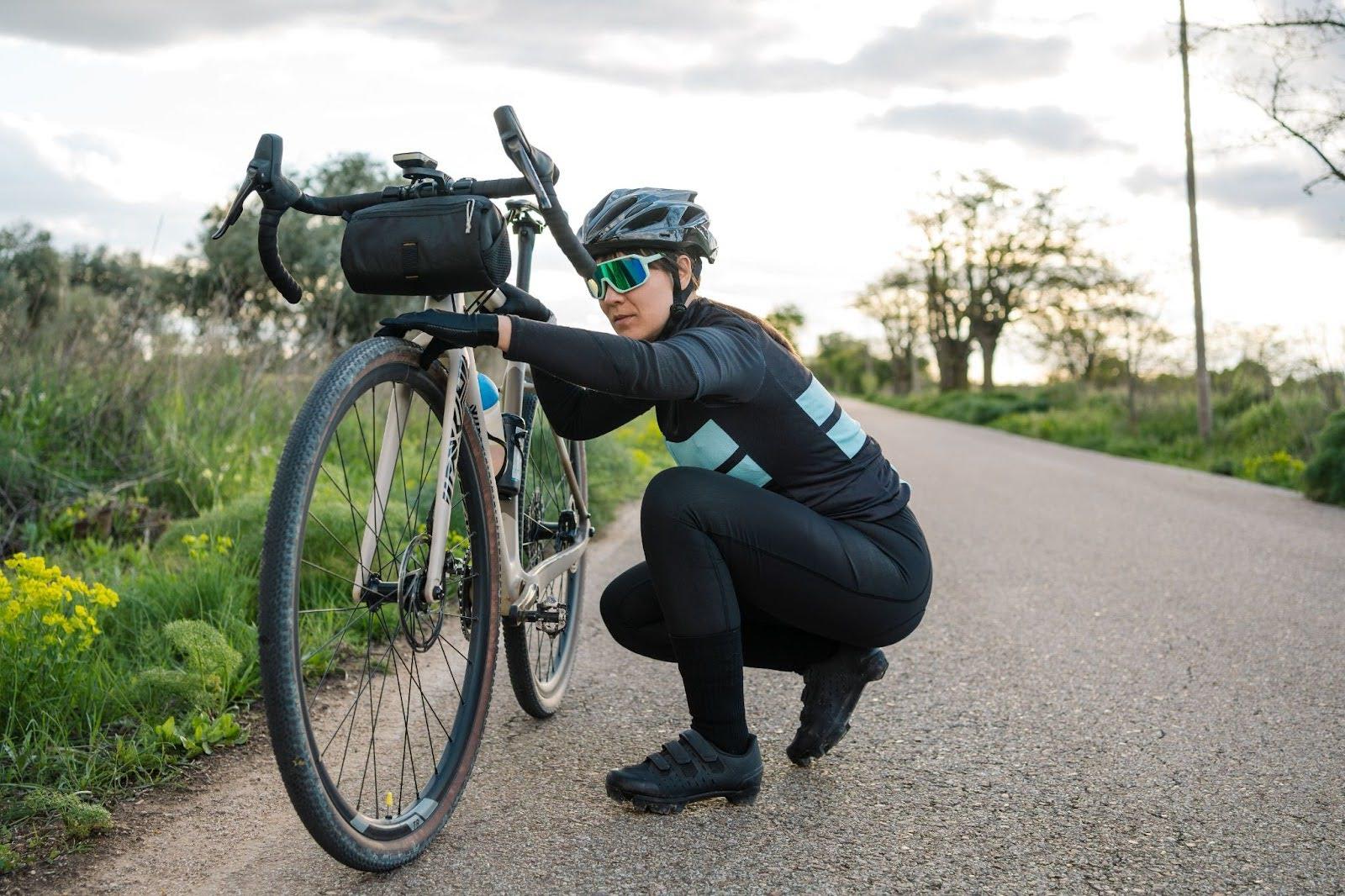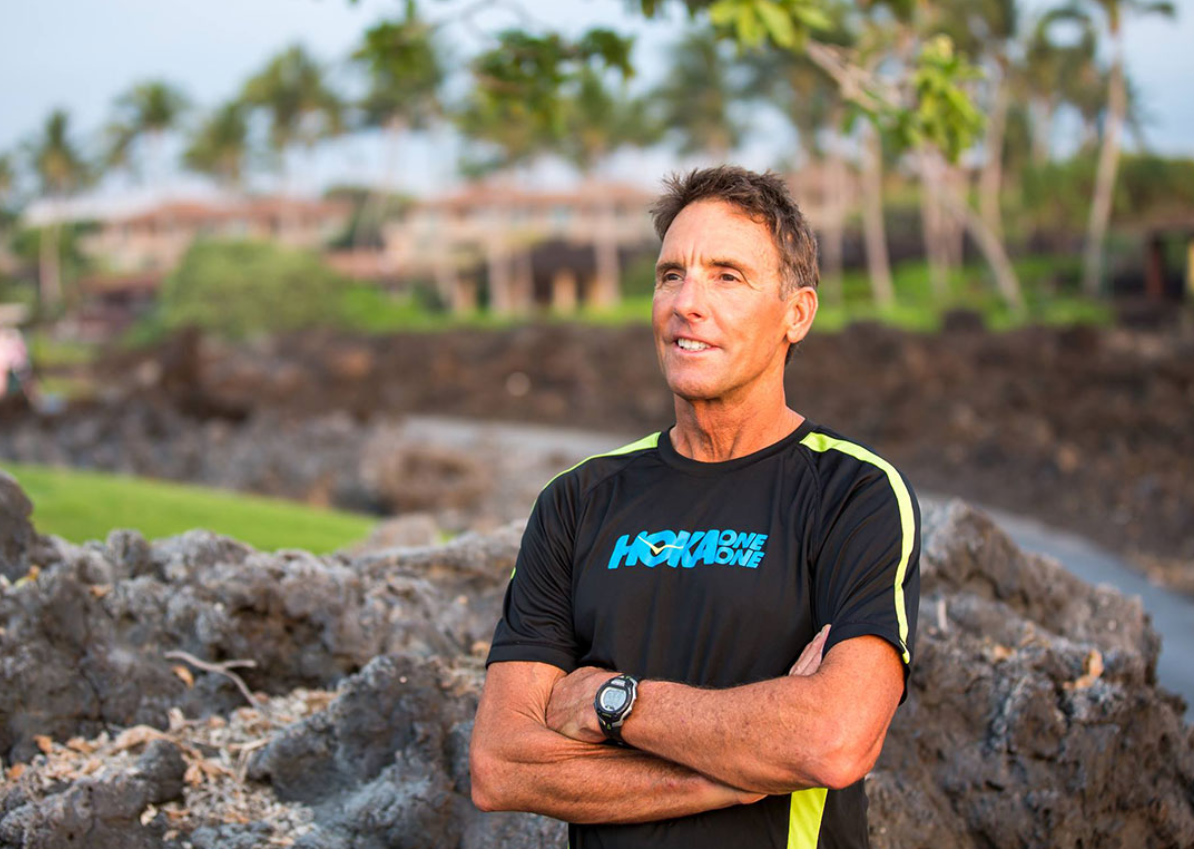Staying visible & safe when cycling in wet conditions
When the skies turn dark and the rain starts falling, visibility becomes top priority.
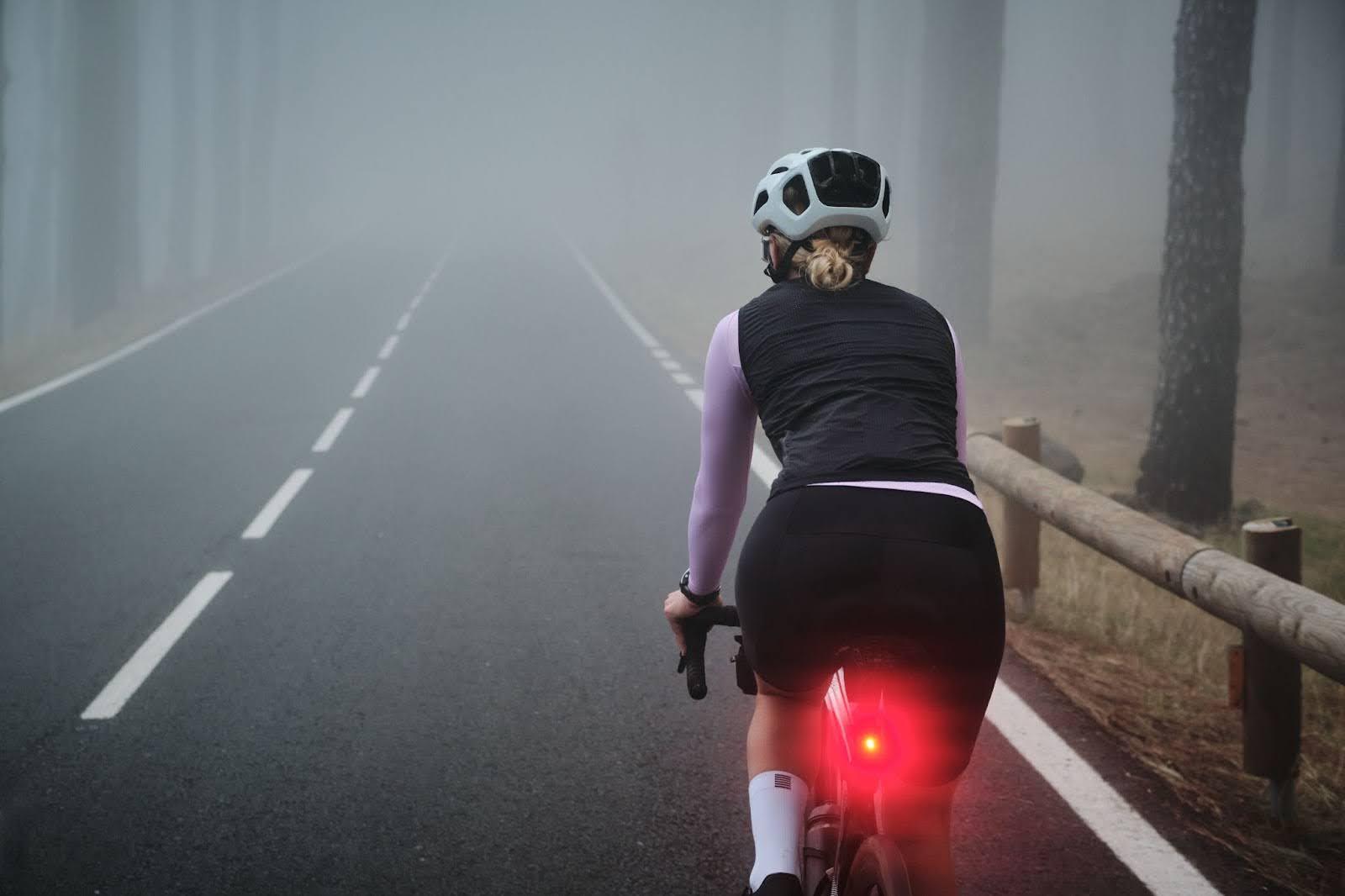
High quality bike lights are non-negotiable: A flashing rear light catches drivers’ attention, and a bright, steady front beam helps you see the road ahead. For extra visibility, consider lights on your helmet or seat stays and recharge them regularly.
Reflective elements are another layer of defence. Reflective strips on your clothes, shoes and even wheel spokes make a big difference in low light. Some cyclists even add reflective tape to fenders or frame tubes for extra brightness.
Beyond equipment, smart route-planning helps you stay safe. Choose well lit streets or designated cycling lanes when possible, even if it means taking a slightly longer route. Avoid roads with heavy traffic or poor drainage – large puddles or flooded sections can be hazardous. If you’re commuting, allow a bit of extra time; rushing in the rain is rarely worth the risk.
Being visible isn’t just about gear – it’s about attitude. Ride steady, signal loud and hold your line. The more visible and predictable you are, the safer you’ll be.
How to ride in the rain
The biggest challenges when cycling in the rain are slippery surfaces and longer stopping distances. Wet roads lose traction, so smooth, deliberate riding is key.
Brake earlier and more gently than usual. Sudden braking can lock your wheels and you’ll skid. If you have rim brakes, remember they need an extra second or two to “bite” in the wet, so anticipate traffic lights and corners early.
Cornering requires extra care too. Keep your body relaxed, your weight central and your movements smooth. Don’t lean too hard; instead steer slightly wider and keep your eyes on your exit.
One of the best wet-weather cycling tips is to avoid painted road markings, metal covers and wet leaves, all of which are treacherous when wet.
Puddles can hide potholes or debris so ride around them whenever you can.
Lowering your tyre pressure by about 10psi can also help. Softer tyres have a bigger contact patch so more grip and stability. If you ride in the wet regularly consider switching to wider tyres with light tread or all-weather tyres that shed water well.
Finally, slow down on descents and keep a safe distance from other cyclists or vehicles. Rain affects traction but also visibility, yours and others’.
Smooth, steady and alert riding keeps you upright and confident when the road gets slippery.
Bike setup & maintenance after rainy rides
A bit of prep and post-ride care will save your bike from the worst of the wet weather.
First and foremost, add mudguards or fenders if your frame allows. They may not be glamorous but they’re one of the best investments for rainy rides.
Mudguards stop road spray from soaking you (and anyone riding behind you) and protect your drivetrain from grit and water.
After every rainy ride, take a few minutes to wipe down your bike, being sure to clean your chain, cassette and derailleurs. Water and grime are a corrosive combo that can wear down metal parts quickly. Use a soft brush or rag to remove grit from around the brakes and gears, then dry everything thoroughly.
Once your bike is clean apply a fresh coat of wet lube to the chain. This thicker lubricant is designed to resist rain and road spray, reduce wear and keep your drivetrain running smoothly. Make sure to wipe off any excess to prevent attracting more dirt.
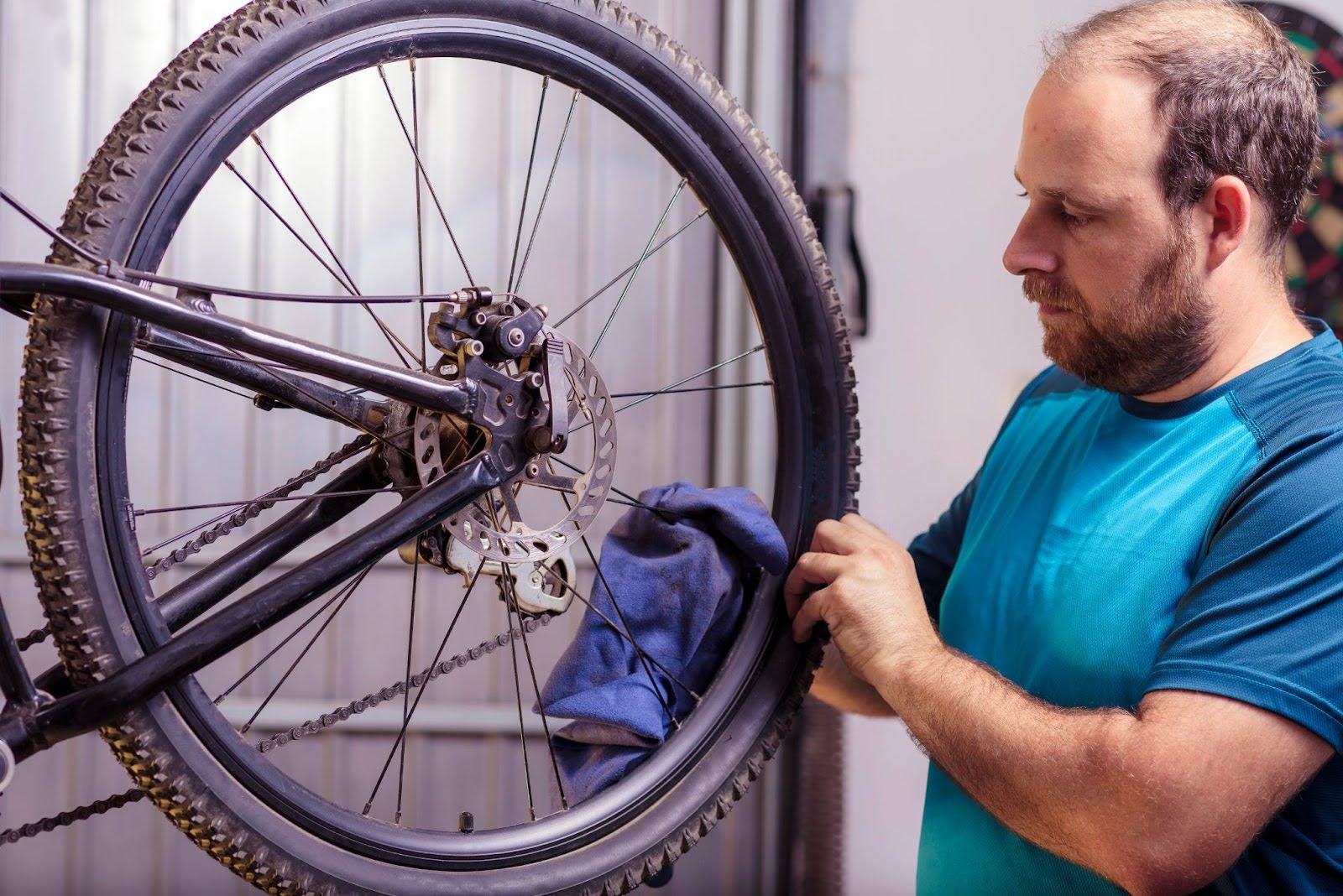
If you ride in the rain regularly, pay special attention to properly maintaining your bike. Look out for worn brake pads, rust spots and loose bolts. A little post-ride TLC goes a long way in keeping your ride in top shape.
Mindset & motivation for wet rides
With the right mindset, cycling in the rain can be fun. The key is preparation and attitude. If you’re dry, warm and confident in your gear, there’s something special about going for it.
Lower your expectations a bit. Rain rides don’t have to be about setting personal bests – they’re about building your mental toughness, skills and consistency. Think of them as mental training as much as physical. When you roll out the door knowing you’ll finish what you started regardless of the weather, it’s a small win that adds up over time.
Make rainy rides enjoyable in their own right. Listen to the rhythm of the rain drops on your helmet, feel the fresh air on your face, and take pride in the fact that you’re out there doing it.
You’re part of a hardy bunch of cyclists who don’t let the weather dictate their goals. If your motivation wanes, plan your rides around rewards. A hot shower, a steaming post-ride cup of coffee or dry socks at the end can work wonders for morale.
Even better, schedule some post-ride time to stretch or relax – it’s a great way to transition from effort to satisfaction.
Consistency is what separates casual riders from confident cyclists and embracing wet rides is part of that discipline. The more you do it the easier it gets.
The OTHER option for rainy days: Riding indoors on ROUVY
Sure, this article’s about the joys and benefits of riding outdoors, even when it’s raining. But what about those times when you’re just not up to it? Or when the rain’s been coming down for days, and shows no signs of letting up? The answer? Grab a water bottle and towel, and head to your pain cave for some training on the ROUVY indoor cycling app. You can choose from thousands of ultra-realistic routes on the app, each filmed on location around the world. Or pick from one of ROUVY’s targeted workouts or pro-designed training plans. There are suitable options for all fitness levels.
Conclusion: Rain makes you a better cyclist
Cycling in the rain isn’t just about getting through it – it’s about enjoying it. Each wet-weather ride makes you more aware, more skilled and more resilient. It teaches you to anticipate, adapt and stay calm under pressure. And those lessons carry over into every ride you do, making you a smoother, more confident cyclist.
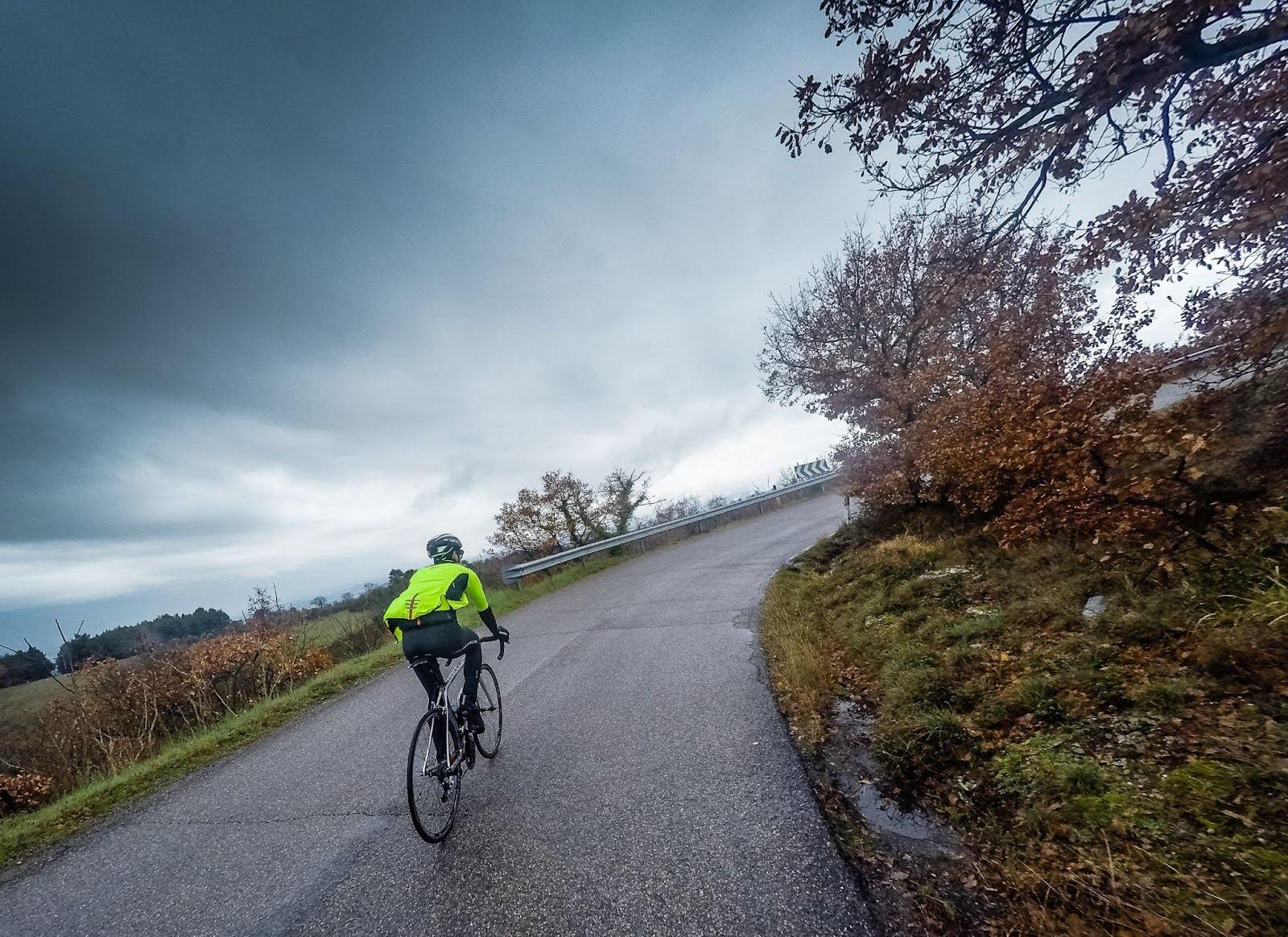
And when the rain stops? Those dry kilometres in the sun will feel even better. You’ll know you’ve earned them – the rain made you tougher, more skilled and ready for anything.
So next time the clouds gather and it starts to drizzle, don’t hang up your helmet. Get kitted up, turn on your lights and hit the road or trail with confidence. With some prep and a positive attitude you’ll find wet rides are just as good as dry ones – maybe even better.
Okay, not better. But you get the point.
Rain Ride Checklist: Before, during & after your ride
Before Your Ride:
- ✅ Check the weather forecast and plan your route to avoid flooded or poorly lit roads.
- ✅ Fit mudguards and make sure your lights and reflectors are working.
- ✅ Lower tyre pressure slightly for better grip on wet roads.
- ✅ Dress in quality rain cycling gear: waterproof jacket, gloves, overshoes and visible layers.
- ✅ Apply wet-weather chain lube to protect your drivetrain.
- ✅ Pack dry clothes, a towel and a waterproof bag for essentials.
During Your Ride
- ✅ Ride smoothly and avoid sudden braking or sharp cornering.
- ✅ Stay alert for puddles, painted lines, metal covers, wet leaves, etc.
- ✅ Keep front and rear lights on to stay visible to traffic.
- ✅ Stay relaxed and steady for better control and confidence.
- ✅ Maintain a safe distance from cars and other cyclists.
- ✅ Enjoy the challenge! Rain rides sharpen your skills and mental toughness.
After Your Ride
- ✅ Rinse and wipe down your bike to remove grit and dirt.
- ✅ Dry the chain and reapply wet lube to prevent rust.
- ✅ Check brakes, tyres, and bolts for wear or corrosion.
- ✅ Change into warm, dry clothes and reward yourself with a hot drink.
Sources & further reading




